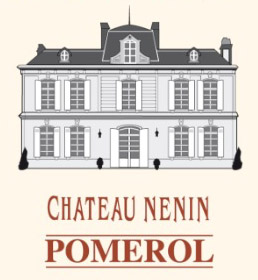
History
On the eve of the 1997 harvest, Jean-Hubert Delon purchased Château Nénin, which had belonged to his cousins, the Despujol family, since 1847. A major restructuring was immediately undertaken.
The pruning and trellising methods were reviewed, the land was drained, the vines were replanted or uprooted, and the equipment modernized. The aging and storage cellars were extended and completely re-fitted, and air conditioning was added. A new vat room, furnished with state-of-the-art equipment, was built thereby completing the total transformation of the property.
Terroir
Château Nénin’s vineyards grow on a single block of land with the exception of one plot. In Pomerol, where it is rare for an estate to exceed 10 hectares, Château Nénin’s vineyard is considered very large, with 32 hectares of vines in production. As a consequence, its terroir includes the many, diverse soils that characterize Pomerol. It is mainly made up of Oligocene deposits covered by Dordogne alluvial gravelly formations; siliceous clay and gravel, quartz, granite, iron-deposits and basalt pebbles. Château Nénin’s vineyards grow on the great clay-gravel terroirs of the Pomerol Plateau. The grape varieties planted are Merlot 76%, Cabernet Franc 23%, and Cabernet Sauvignon 1%.

Château Nenin
Overview: According to the Delon family, Château Nénin is the epitome of a great Pomerol “vin de garde” (wine for laying down). It combines power and elegance, complexity and balance, purity and refi nement. The gradual increase of Cabernet Franc within the vineyards gives the wine tautness, distinction and freshness. To really appreciate the Grand Vin’s ageing ability, you may need to be patient. Like all great Pomerol vins de garde, Château Nénin blossoms over time.
AOC: Pomerol
Production Area: 32 ha
Grape Varieties: Merlot, Cabernet Franc (percentages vary depending on the vintage)
Average Age of Vines: 28 years
Density of Plantation: 6,300 to 7,100 plants/ha
Aging: Château Nenin is aged in 30% new oak (or less) for an average of 18 months.

Fugue de Nénin
Overview: Fugue de Nénin was created and first sold in 1997. Fugue comes from sandy-clay soils found in the eastern part of the Château’s vineyards, as well as from the young vines planted on the great plateau terroirs. This second wine is a typical example of the charm of Pomerol. Fugue is a reference to music; it means a repetition of the main theme. This name makes sense when you taste the wine – Fugue complements the tonalities of its older sibling extremely well, while providing its own attractive and entertaining rendition. The wines are smooth and silky and can be enjoyed earlier than those of the Grand Vin.
Grape Varieties: Merlot, Cabernet Franc (percentages vary depending on the vintage)
Tasting Notes: Intense garnet color. The nose is fine, elegant, with notes of red fruit and citrus. On the palate, the tannins are supple with fruity hints.


